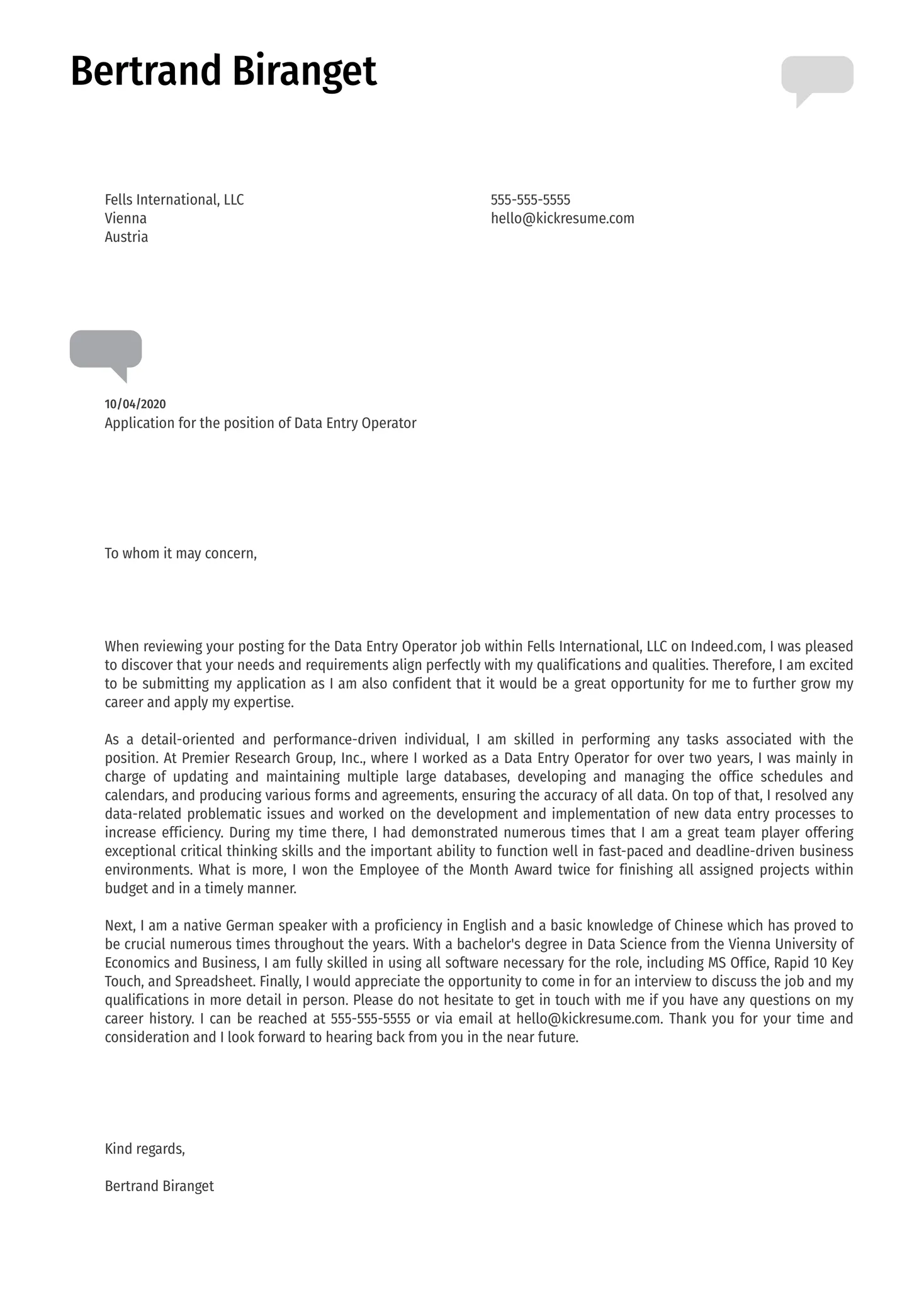Why a Data Entry Cover Letter Matters
In the competitive job market, especially for data entry positions, a cover letter is more than just an optional document—it’s your first impression. It offers you a chance to showcase your personality, enthusiasm, and specific skills that a resume alone cannot convey. A well-crafted cover letter can significantly increase your chances of landing an interview, demonstrating to potential employers that you’re not just a qualified candidate, but also someone who is genuinely interested in the role and the company. Data entry jobs often involve repetitive tasks, making attention to detail and accuracy paramount. Your cover letter is the perfect place to demonstrate these traits from the outset, setting the tone for your application and showing that you understand the nuances of the position. Therefore, make your cover letter standout.
Key Components of a Strong Data Entry Cover Letter
A compelling data entry cover letter comprises several essential elements. Start with a professional header including your contact information and the date, followed by the hiring manager’s name (if available) and the company’s address. The introduction should immediately grab the reader’s attention by expressing your interest in the position and highlighting what makes you a suitable candidate. The body of the letter should delve into your relevant skills and experiences, providing specific examples that demonstrate your abilities. Remember to tailor the content to the job description to show that you understand the employer’s requirements. Conclude with a strong closing statement that reiterates your interest and includes a call to action, such as requesting an interview. Maintain a professional and enthusiastic tone throughout the document, and always proofread meticulously for any errors.
Highlighting Your Skills
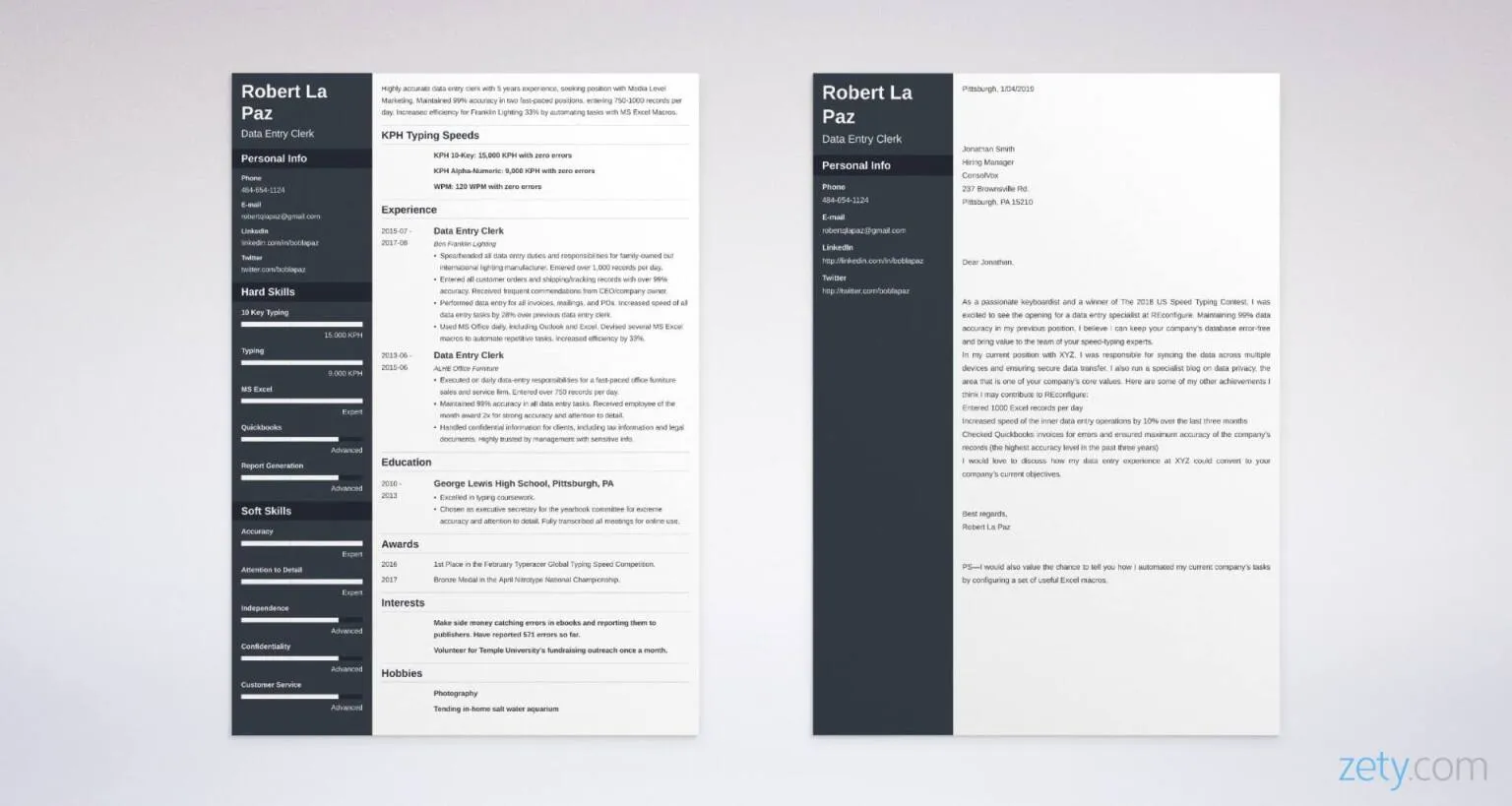
Data entry jobs require a specific set of skills, and your cover letter should effectively showcase these. Focus on your proficiency in typing speed and accuracy, highlighting how many words per minute you can type and your error rate. Mention your attention to detail, emphasizing your ability to maintain precision when handling large volumes of data. Also, emphasize your computer proficiency, including any software programs or systems you have experience with, such as Microsoft Office (Word, Excel), Google Sheets, or specialized data entry software. Providing concrete examples of how you’ve applied these skills in the past will help to impress employers, solidifying your candidacy and increasing your chances of being selected for an interview.
Typing Speed and Accuracy
Typing speed and accuracy are fundamental skills for data entry roles. Employers look for candidates who can efficiently input data without errors. In your cover letter, specify your typing speed, such as ‘I can type 65 words per minute with a 99% accuracy rate’. This demonstrates your ability to handle a high volume of data efficiently. You can mention any typing certifications you have earned or any tools used to enhance your typing skills. Highlighting your speed and accuracy immediately conveys your suitability for the job, assuring the employer that you can meet the demands of the role.
Attention to Detail
Attention to detail is the backbone of successful data entry. It guarantees data integrity and minimizes errors. In your cover letter, showcase your ability to meticulously review data and identify and correct any inconsistencies. You can share instances where your attention to detail proved vital in preventing or rectifying data errors in previous roles or projects. Illustrate your process for ensuring accuracy, such as cross-referencing data, using validation checks, or implementing quality control measures. Highlighting your commitment to accuracy will set you apart as a dependable and precise candidate.
Computer Proficiency
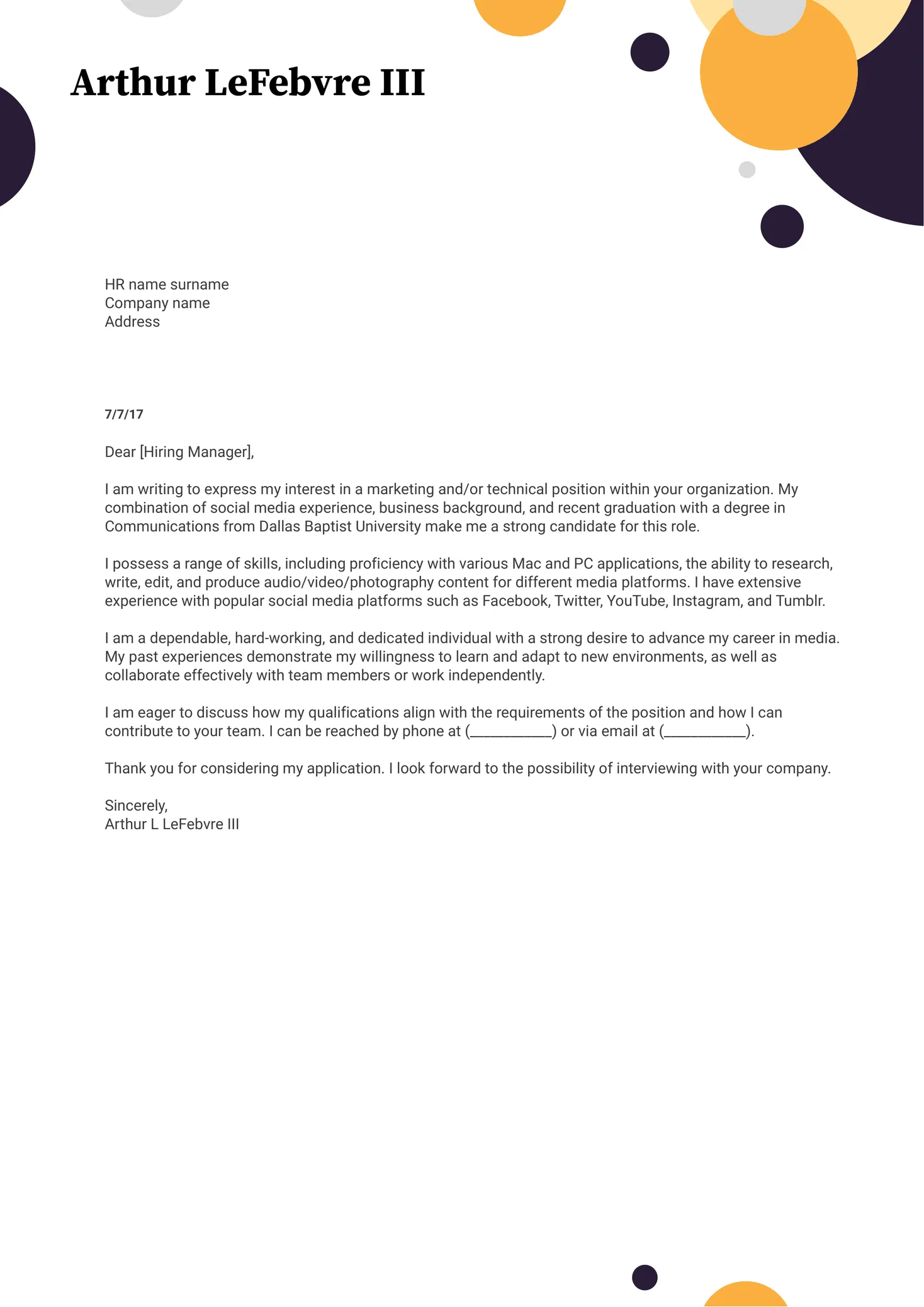
Computer proficiency is essential for data entry positions. In your cover letter, specify your experience with relevant software and systems. This includes familiarity with Microsoft Office Suite, specifically Excel, for data management. You may also mention experience with Google Sheets, data entry-specific software, or CRM systems. If the job description lists specific software, be sure to mention your familiarity with those. Mentioning your experience with relevant software indicates that you can quickly adapt to the specific technical requirements of the role, streamlining your onboarding process. This will show that you have the practical skills necessary to fulfill the job’s obligations.
Showcasing Relevant Experience
Your work experience is pivotal. Your cover letter should clearly demonstrate how your past roles align with the requirements of the data entry position. It’s crucial to provide specific examples of how you’ve successfully handled similar responsibilities in the past. If you’ve previously held data entry roles, emphasize your ability to manage large volumes of data efficiently, handle confidential information with discretion, and meet deadlines consistently. For those with limited prior experience, focus on transferable skills from other positions, such as meticulousness, organizational abilities, and familiarity with computer software and systems. Make sure to highlight any experience with data entry software or data management tools, as this directly showcases your proficiency in the field.
Previous Data Entry Roles
If you have previous experience in data entry roles, use your cover letter to demonstrate your proficiency. Detail your specific responsibilities, such as entering data into databases, verifying information, and maintaining data accuracy. Quantify your achievements whenever possible, such as the number of records processed daily or the reduction in errors you achieved. Highlight any specialized data entry software or systems you’ve used, such as SAP, Salesforce, or custom-built databases. Providing concrete examples of your data entry tasks demonstrates your capabilities and increases your chances of getting hired.
Handling Confidential Information
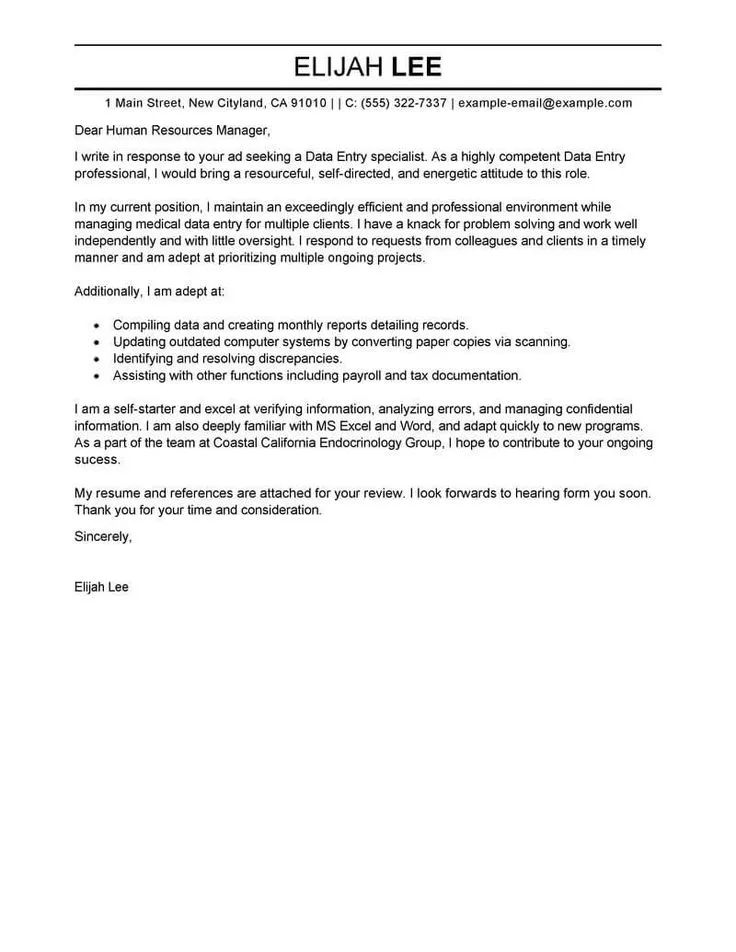
Data entry often involves handling sensitive and confidential information. Your cover letter is where you can show your ability to handle confidential information. Describe any experiences where you’ve managed confidential data, such as financial records, client information, or medical data. Emphasize your understanding of data security protocols, including adherence to privacy regulations, secure data storage, and protection against unauthorized access. Show that you are aware of data security measures and the importance of handling data responsibly. Demonstrate your ability to maintain discretion and safeguard sensitive information.
Experience with Data Entry Software
Data entry professionals are expected to know their way around data entry software. Mention your familiarity with these tools and systems, as this immediately conveys your suitability for the job. Describe any experience with software such as Microsoft Excel and Google Sheets. Highlight any specific data entry software you have used, such as SAP, Salesforce, or custom-built databases. Be specific about the types of data you’ve managed within these systems and any specific tasks you performed, such as data validation, data cleansing, or report generation. This shows that you have practical knowledge, which increases your appeal as a candidate.
Formatting Your Cover Letter for Success
Formatting a cover letter is an essential step toward showcasing your professionalism and attention to detail. You can start with a clean and easy-to-read font, such as Arial or Times New Roman, in a standard size (11 or 12 points). Use single spacing within paragraphs and double spacing between them. Maintain consistent margins on all sides of your document. Divide your cover letter into clear sections, including an introduction, body paragraphs, and a concise conclusion. Proofread your work carefully to check for spelling and grammatical errors. Always tailor your cover letter to the specific job requirements, matching your skills and experience to the job description. Your formatting is a reflection of your attention to detail, which is critical in data entry roles.
Choosing the Right Tone
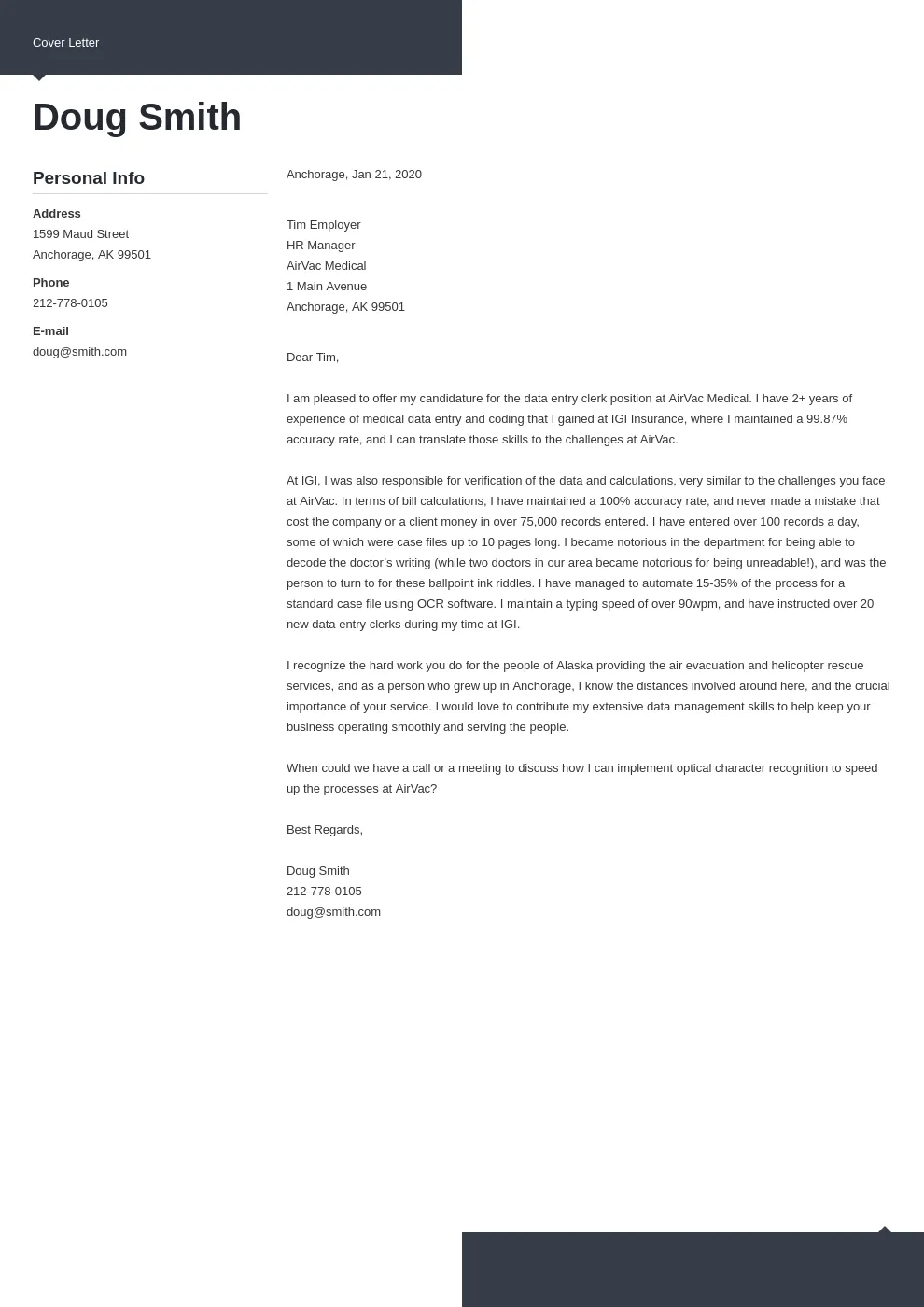
The tone of your cover letter should align with the professional environment. It is vital to maintain a tone that is both professional and enthusiastic. Use formal language and avoid slang or contractions. Demonstrate enthusiasm for the position and the company, but refrain from being overly familiar. Your cover letter should reflect your personality and demonstrate your keen interest in the role. Your tone should be confident and assured, showcasing your skills and experience, but avoid sounding arrogant. The tone of your cover letter should highlight your professionalism and reflect the standard of the company.
Formatting Basics
Formatting basics are essential in crafting a clear and readable cover letter. Begin with your contact information, the date, and the hiring manager’s name and company address. Use a standard, easy-to-read font like Arial or Times New Roman, and use a font size between 11 and 12 points. Maintain consistent margins (typically one inch on all sides) to ensure that the text is well-spaced and easy to read. Use single spacing within paragraphs and double spacing between them to create visual separation. Use clear and concise language, avoiding jargon and complex sentences. Your formatted letter should look professional and polished.
Proofreading and Editing
Proofreading and editing are paramount in a cover letter. After writing, meticulously review your letter for any spelling, grammar, punctuation, or formatting errors. Read through your cover letter several times. It’s beneficial to have a friend or colleague review your cover letter for a fresh perspective. Make sure all the details are accurate, including the company name, the hiring manager’s name, and job title. Take your time and make sure that every detail is perfect. A well-proofread cover letter communicates your attention to detail and professionalism, and it can improve your prospects of getting a data entry role.
Data Entry Cover Letter Mistakes to Avoid
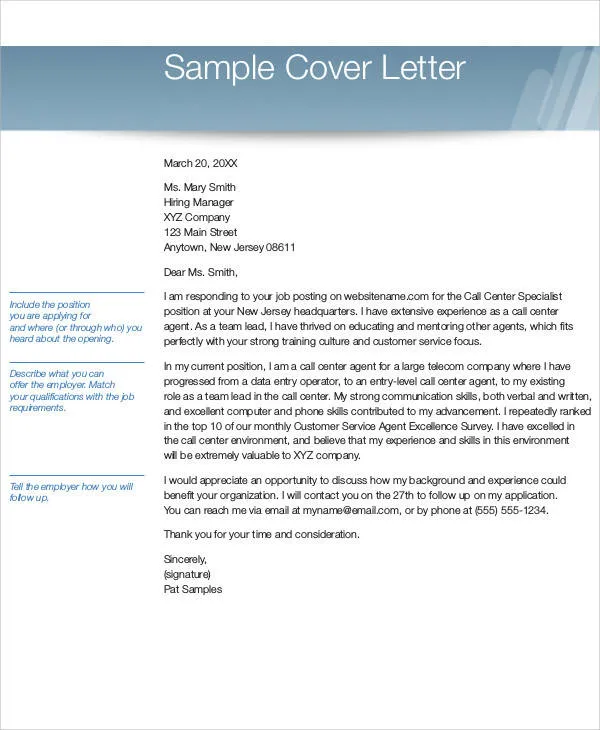
Avoid common mistakes that can immediately disqualify your application. Don’t make generic cover letters; always tailor your letter to the job posting and the company. Refrain from including irrelevant information or details that don’t match the job requirements. Avoid typos, grammatical errors, and sloppy formatting. Never use overly casual language or jargon. Don’t focus solely on what you want from the job; instead, emphasize how you can contribute to the company’s success. Do not exaggerate your skills or experience or provide false information. Also, avoid rehashing your resume; use the cover letter to expand on your qualifications. Steer clear of these blunders to show your value.
Tailoring Your Cover Letter to the Job
The most important aspect of a successful cover letter is its ability to align with the specifics of the job you’re applying for. Start by carefully analyzing the job description. Identify the key requirements, skills, and qualifications that the employer seeks. Then, tailor your cover letter to specifically address these points. Show how your experience, skills, and personality match the job requirements. Use the same keywords and phrases from the job description. If the job requires specific software experience, make sure to highlight your relevant skills and experience. Tailoring your cover letter shows employers that you are a great fit for their needs.
Call to Action Requesting an Interview
Conclude your cover letter with a strong call to action. Express your interest in an interview. State that you are eager to discuss your qualifications further. Thank the hiring manager for their time and consideration. Make it easy for the hiring manager to contact you. Include your contact information and state your availability for an interview. Make sure your call to action is confident and professional. A strong call to action leaves a lasting positive impression.
